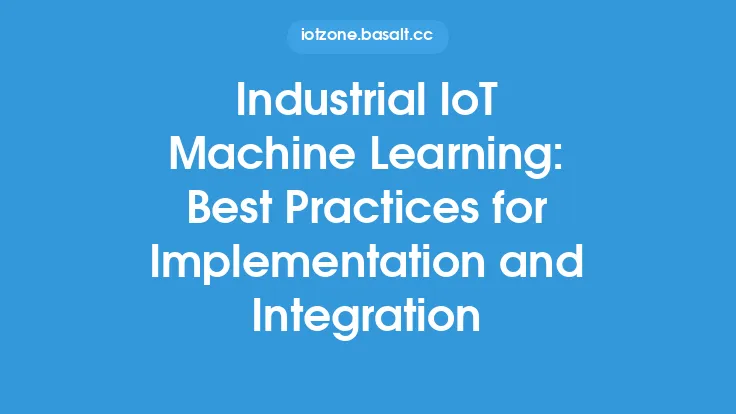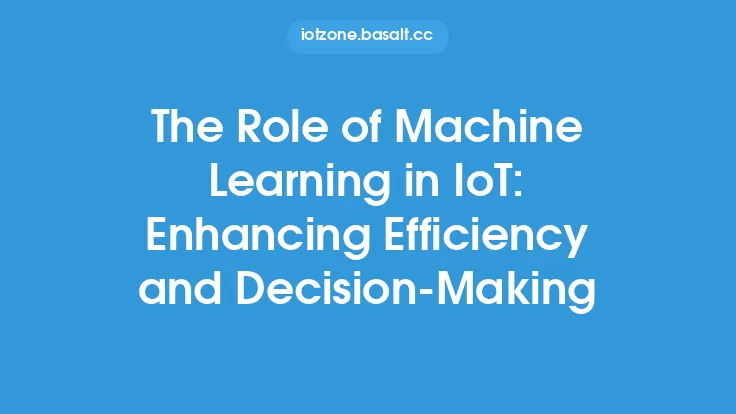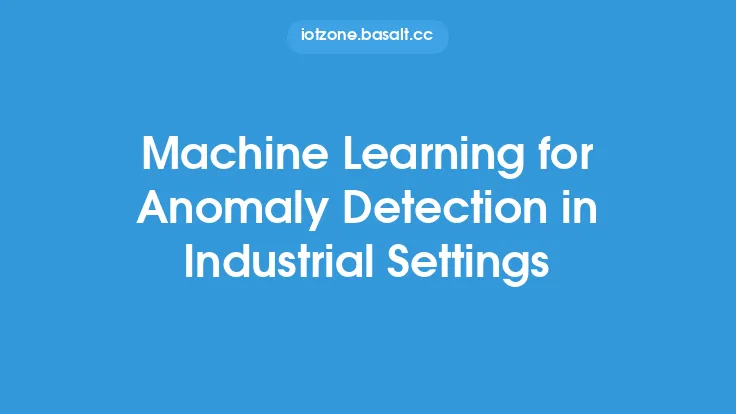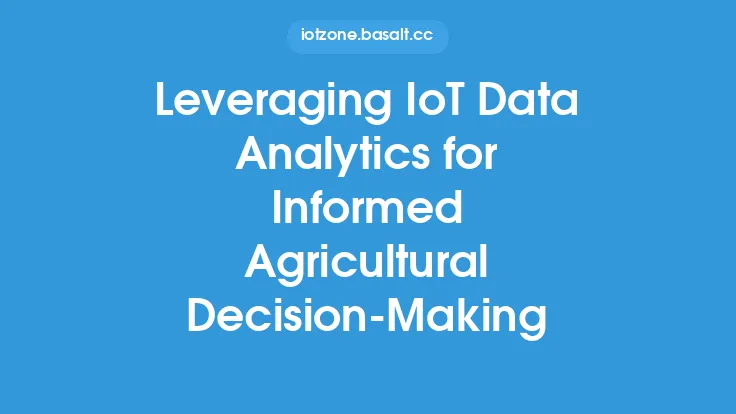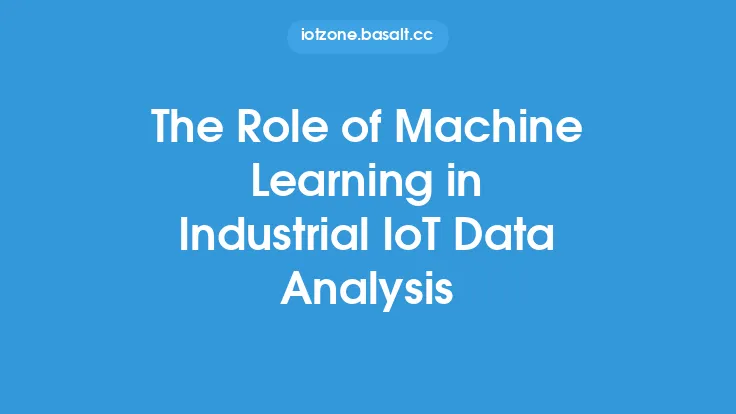The increasing use of Industrial Internet of Things (IIoT) devices has led to an explosion of data being generated in industrial settings. This data can be used to improve decision-making, optimize operations, and increase efficiency. However, the sheer volume and complexity of the data make it difficult for humans to analyze and make decisions in real-time. This is where machine learning (ML) comes in – a subset of artificial intelligence (AI) that enables systems to learn from data and make predictions or decisions without being explicitly programmed.
Introduction to Machine Learning in Industrial IoT
Machine learning is a key technology that can help industrial organizations to unlock the full potential of their IIoT data. By applying ML algorithms to the data generated by IIoT devices, organizations can gain insights into their operations, predict potential problems, and make data-driven decisions. ML can be used for a variety of tasks, including predictive maintenance, quality control, and supply chain optimization. The use of ML in industrial settings can help to reduce downtime, improve product quality, and increase overall efficiency.
Types of Machine Learning
There are several types of machine learning, including supervised learning, unsupervised learning, and reinforcement learning. Supervised learning involves training a model on labeled data, where the correct output is already known. The model learns to map inputs to outputs based on the labeled data, and can then be used to make predictions on new, unseen data. Unsupervised learning involves training a model on unlabeled data, where the model must find patterns or structure in the data on its own. Reinforcement learning involves training a model to take actions in an environment, with the goal of maximizing a reward signal.
Machine Learning Algorithms for Industrial IoT
Several machine learning algorithms are particularly well-suited for industrial IoT applications. These include decision trees, random forests, support vector machines (SVMs), and neural networks. Decision trees are a type of supervised learning algorithm that can be used for classification and regression tasks. Random forests are an ensemble learning method that combines multiple decision trees to improve the accuracy and robustness of predictions. SVMs are a type of supervised learning algorithm that can be used for classification and regression tasks, and are particularly well-suited for high-dimensional data. Neural networks are a type of supervised learning algorithm that can be used for a variety of tasks, including classification, regression, and feature learning.
Data Preprocessing for Machine Learning
Before machine learning algorithms can be applied to IIoT data, the data must be preprocessed to ensure that it is in a suitable format. This can involve several steps, including data cleaning, feature scaling, and feature selection. Data cleaning involves removing missing or erroneous values from the data, and handling outliers. Feature scaling involves scaling the data to a common range, to prevent features with large ranges from dominating the model. Feature selection involves selecting the most relevant features for the model, to prevent overfitting and improve the accuracy of predictions.
Real-Time Data Processing and Analytics
One of the key challenges in industrial IoT is the need for real-time data processing and analytics. IIoT devices can generate vast amounts of data, and this data must be processed and analyzed in real-time to support decision-making. Several technologies can be used to support real-time data processing and analytics, including stream processing, edge computing, and in-memory computing. Stream processing involves processing data in real-time, as it is generated by IIoT devices. Edge computing involves processing data at the edge of the network, close to where it is generated. In-memory computing involves processing data in the memory of a computer, rather than on disk, to improve performance.
Integration with Industrial Control Systems
Machine learning can be integrated with industrial control systems (ICS) to support real-time decision-making. ICS are used to control and monitor industrial processes, and can be integrated with ML models to support predictive maintenance, quality control, and optimization. Several technologies can be used to support the integration of ML with ICS, including OPC-UA, MQTT, and DDS. OPC-UA is a communication protocol that can be used to integrate ML models with ICS. MQTT is a lightweight messaging protocol that can be used to integrate ML models with ICS. DDS is a middleware protocol that can be used to integrate ML models with ICS.
Security and Privacy Considerations
The use of machine learning in industrial IoT also raises several security and privacy considerations. IIoT devices can be vulnerable to cyber attacks, and ML models can be used to support predictive maintenance and anomaly detection. However, ML models can also be vulnerable to attacks, such as data poisoning and model inversion. Several technologies can be used to support the security and privacy of ML models, including encryption, access control, and anomaly detection. Encryption involves protecting data with encryption algorithms, to prevent unauthorized access. Access control involves controlling access to ML models, to prevent unauthorized use. Anomaly detection involves detecting unusual patterns in data, to support the detection of cyber attacks.
Future Directions
The use of machine learning in industrial IoT is a rapidly evolving field, with several future directions. One of the key areas of research is the development of more advanced ML algorithms, such as deep learning and transfer learning. Deep learning involves the use of neural networks with multiple layers, to support the learning of complex patterns in data. Transfer learning involves the use of pre-trained ML models, to support the learning of new tasks. Another area of research is the development of more robust and secure ML models, to support the security and privacy of industrial IoT systems.
